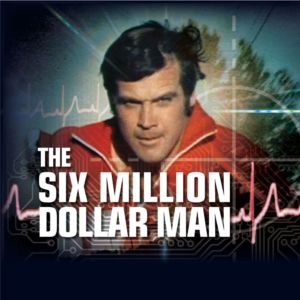“Gentlemen, we can rebuild him. We have the technology.
We have the capability to make the world’s first bionic man.
Steve Austin will be that man. Better than he was before. Better … stronger … faster.”
—Opening narration, “The Six Million Dollar Man” (1974-1978)
Americans didn’t know it then but their earliest exposure to what would be called biohacking occurred weekly in their living rooms on television. The program was based on the speculative fiction novel “Cyborg.” Today, however, Oscar Goldman’s dramatic narration (there wasn’t a better Cold War-era TV character) would probably say this about Col. Austin: “Do it yourself, pal.”
In the real world, “biohacking,” a fusion of biology and technology, is a process of “gathering data on the human body and optimizing based on the results,” according to biohacked.com. The site’s founder, Dave Asprey, says it is the “art and science of changing the environment around you and inside you, so you have more control over your own biology.” Cynics counter with a different definition: DIY genetic experimentation.
“PBS Newshour” noted four years ago that most hacking occurs in small labs — mostly non-university — “where all sorts of people get together to explore biology.” And in kitchens, basements and garages. If garage bands wanted to be The Beatles, garage biologists want to be the next Ake Senning. (Sixty years ago he implanted the first pacemaker.) Only now, some create synthetic life-forms.
Today, Bio Hacked allows visitors to buy products, (“awesome hacks”) like night time sleephacking glasses. And diybio.org offers visitors a journey through the “DIYbiosphere” and finds them local groups and meetups.
Last month, The New York Times wrote about “Grindfest,” the annual meetup of radical biohackers — so named for grinding, it is a subculture described as “medical punk.” Now in its fifth year, this “alternate universe” (where transhumanism collides with techno-progressivism) is the “anti-establishment fringe of a bio-hacking movement that’s increasingly in the zeitgeist.” Grinders, likewise, try to “optimize the body.”
Many do so by body modification or chemical manipulation; many have magnets, RFID and LED implants, which act as a kind of gruesome app for physiological enhancement. For some participants, simply waving a hand opens a door. Not just insights.
Much of the biohacking ethos involves “Quantified Self,” self-improvement by studying your logged data. Can you measure and implement the precise amount of sleep you need in order to perform at your best? Biohackers believe you can.
Already, biohacking has gone from extreme to mainstream. With effervescent wholesomeness; shape.com last April wrote about “easy biohacks worth trying.” (Consider their “rewilding.”) And Tony Robbins, the self-described “#1 life and business strategist,” lists on his website “Tony’s Top 3 Biohacks.”
But with the noble comes the nefarious.
As biohacking emerges from its underground digital counterculture, though, some see economic, epistemological and ethical implications by those acting as citizen scientists. Current legal and licensure processes may not adequately address many of its unconventional practices.
Science fiction becomes less fiction and more sinister science with the prospect of amateur geneticists sparking legitimate bioterrorism fears. That’s when biohacks become biohazards. A plot line too farfetched even for “The Six Million Dollar Man.”
Steve Austin was capturing, not becoming, the bioterrorist.

